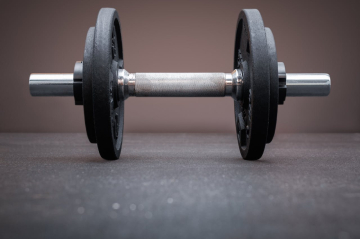The upper body comprises a number of key muscles including the pectorals, deltoids, biceps, triceps, back and core muscles. Strengthening and toning this area not only improves physical appearance, but also promotes overall health, stability, and athletic performance. In this article, we will explore a variety of tips and recommendations for designing an effective upper body training program that suits your goals and needs.
Importance of Upper Body Training.
The upper body plays a crucial role in a wide range of daily activities and sports. From lifting heavy objects to performing athletic movements, strong and balanced musculature in this area is essential for maintaining overall health and well-being. Additionally, upper body training can help prevent injuries, improve posture, and increase strength and endurance in other parts of the body.
Tips for Effective Upper Body Training.
Variety of Exercises: It is important to include a variety of exercises in your routine to work all the muscles of the upper body in a balanced way. This includes exercises for the chest, shoulders, arms, back and core.
Proper Warm-Up: Before starting your upper body training routine, spend a few minutes doing a proper warm-up. This may include joint mobility exercises, dynamic stretches, and some light cardio to increase body temperature and prepare muscles for exercise.
Correct Technique: Make sure you perform each exercise with the correct technique to avoid injury and maximize benefits. Maintain proper posture, pay attention to joint alignment, and avoid carrying too much weight if it compromises form.
Gradual Progression: Don't try to do too much too soon. It is important to gradually progress your upper body training, increasing intensity, weight or training volume over time. This helps prevent injuries and maintain long-term motivation.
Rest and Recovery: Don't underestimate the importance of rest and recovery in your exercise routine. Give your muscles enough time to recover between training sessions and consider including days of active rest or recovery activities such as stretching, yoga or swimming.
Proper Nutrition: A balanced and nutritious diet is essential to support your training goals and promote muscle recovery. Make sure you consume enough protein to repair and build muscle, as well as healthy carbohydrates and fats to provide energy and support bodily functions.
Hydration: Stay well hydrated before, during and after your workout. Dehydration can negatively impact performance and muscle recovery, so make sure you drink enough fluids throughout the day.
Listen to your Body: Finally, listen to your body and respect its signals. If you feel pain or discomfort during an exercise, stop and evaluate whether it is safe to continue. Don't push yourself beyond your limits and remember that progress is a gradual and constant process.
Recommended Exercises for the Upper Body.
Now that we've covered some general tips for effective upper body training, here are some specific exercises you can incorporate into your routine:
Bench Press: This exercise is excellent for working the pectoral muscles, anterior deltoids and triceps. You can do it with a barbell or dumbbells, on a flat, incline or decline bench.
Military Press: The military press targets the deltoids and triceps, as well as the stabilizing muscles of the core. You can do it standing or sitting, with a barbell or dumbbells.
Chin-Ups or Pull-Ups: Chin-ups are an excellent exercise to work the muscles of the back, arms and shoulders. If you can't do full pull-ups, you can try assisted pull-ups or rowing exercises.
Push-ups: Push-ups are a classic exercise that works the pectoral muscles, deltoids, triceps and core. You can vary the position of your hands to target different muscles and increase the difficulty.
Biceps Curl: The biceps curl is excellent for isolating and working the biceps muscles. You can do it with a barbell, dumbbells, or a bicep curl machine.
Triceps Dips: Triceps dips are effective for working the triceps and chest muscles. You can do them parallel, on a chair or on a bench.
Barbell or Dumbbell Row: Rowing is a compound exercise that works the muscles of the back, arms and shoulders. You can do it with a barbell or dumbbells, in an inclined or vertical position.
Planks: Planks are excellent for strengthening the core and stabilizing muscles of the upper body. You can do them in a static or dynamic plank position, or add variations such as side planks or leg raise planks.
Designing your Upper Body Training Routine.
When designing your own upper body training routine, it is important to take into account your individual goals, fitness level, and any specific limitations or restrictions. Be sure to include a variety of exercises that work all of the upper body muscle groups and challenge you progressively over time.
Here is an example of an upper body training routine you can follow:
Day 1: Chest and Triceps.
- Bench Press: 4 sets x 8-10 repetitions
- Push-ups: 3 sets x 12-15 repetitions
- Triceps dips: 3 sets x 10-12 repetitions
Day 2: Back and Biceps.
- Pull-Ups or Pull-Ups: 4 sets x 6-8 repetitions
- Barbell or Dumbbell Row: 3 sets x 10-12 repetitions
- Biceps Curl: 3 sets x 8-10 repetitions
Day 3: Rest or Active Recovery.
Day 4: Shoulders and core.
- Military Press: 4 sets x 8-10 repetitions
- Lateral Raises: 3 sets x 12-15 repetitions
- Planks: 3 series x 30-60 seconds
Day 5: Rest or Active Recovery.
Day 6: Repetition or Variation Routine.
- Repeat one of the previous days or incorporate additional upper body exercises that you haven't done in the week.
Day 7: Total Rest.
Remember to adapt the intensity, volume and training load according to your fitness level and individual goals. Listen to your body and adjust your routine as necessary to achieve the best results.
Effective upper body training is essential for improving strength, stability and athletic performance in a variety of daily and sporting activities. By following these tips and recommendations, and designing a balanced and progressive training routine, you can strengthen and tone your upper body muscles safely and effectively.






